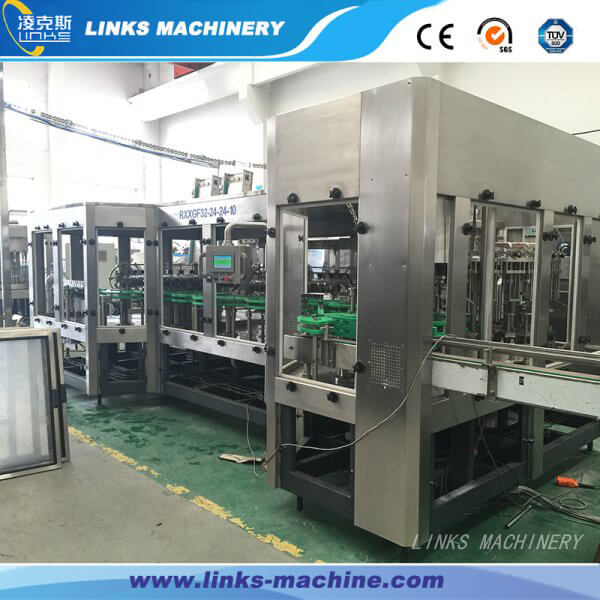©2019-2020 Zhangjiagang Links Machinery Co.,Ltd. All rights reserved.Site Map Privacy Policy
- Mail Us: info@links-machine.com
- Call now: +86 158 5164 6970
As the name suggests, the juice beverage filling production line is used to pour the juice into the production bottle after the juice is made. The purpose of using a juice filling machine is to help produce juice and fill it into the bottle in a more hygienic and orderly manner. If manual methods are used, production will be slow and energy consumption will be quite wasteful.
After purchasing a juice filling machine, how to maintain it in order to maintain its long-term use efficiency is a problem that people care about. In order to prevent the juice filling machine from failing suddenly, which affects the required output, it is very important to maintain the juice filling machine.

Maintenance guide
1. Machine check: The juice filling machine should be checked frequently to keep all parts in a good and safe working condition. Maintenance and inspection can maintain the value of the fruit filling machine and prevent accidental repairs.
2. Regular inspection and replacement of wearing parts: checking the machine can help understand the wear parts that need to be replaced. When it is detected that they meet the replacement conditions or are approaching the replacement date, the next step is to replace these parts to prevent serious damage to the machine. When the parts of the fruit filling machine are loose, they are more prone to failure.
3. Ensure high-wear parts inventory: sufficient spare parts for high-wear parts should be guaranteed. High-wear components are those that are subject to more wear. When parts are damaged, it is easier to replace parts that wear quickly.
4. Lubricate the machine: The juice filling machine should be regularly lubricated to maintain its efficiency and avoid the wear of machine parts.
5. Operate according to the design specifications: the juice beverage filling production line should not exceed the design specifications recommended by the engineer, so as to avoid mechanical failures and prevent more serious accidents.